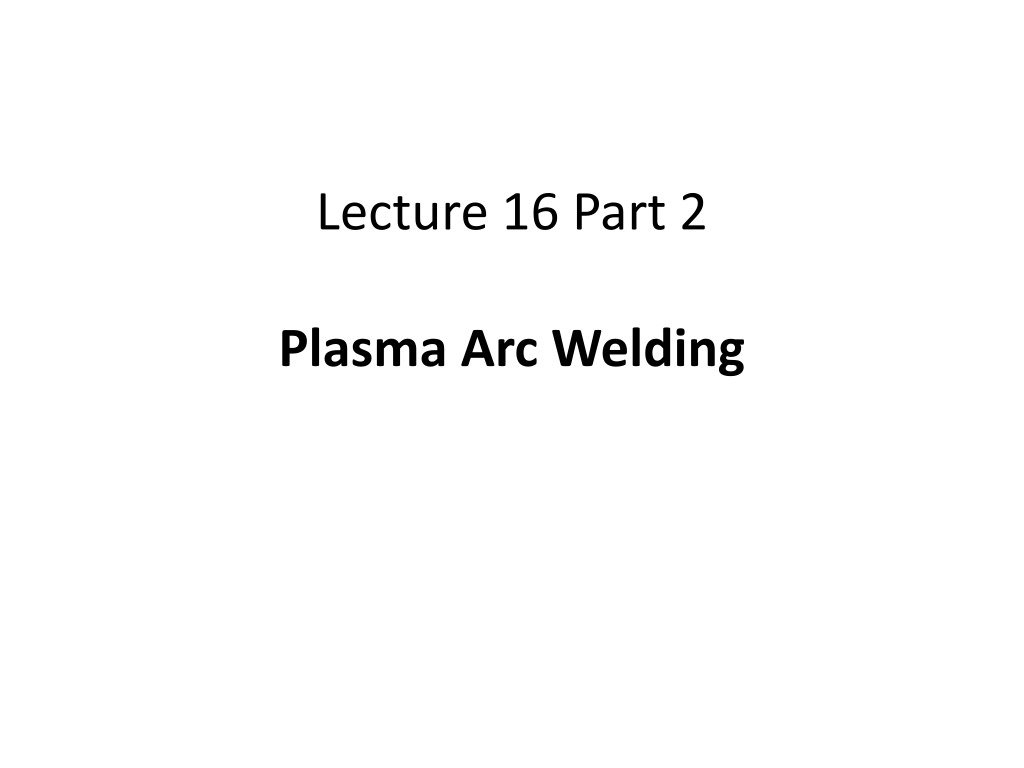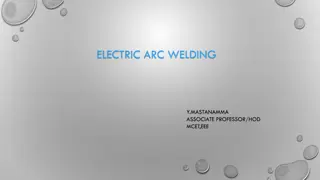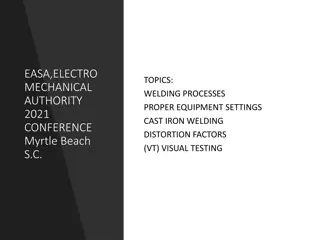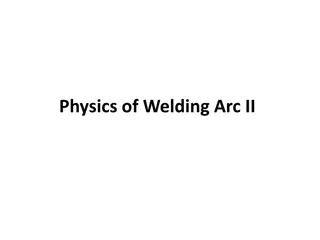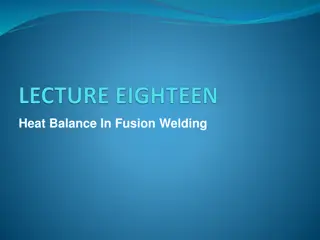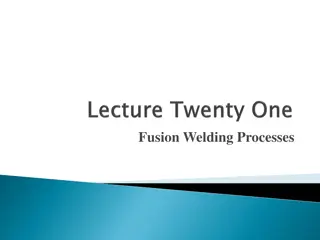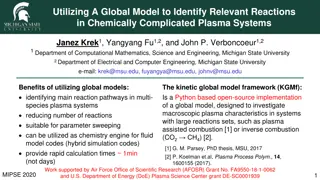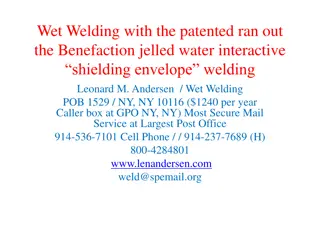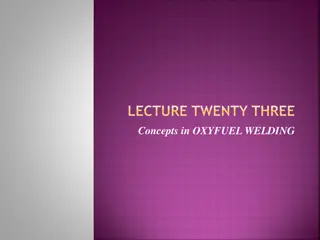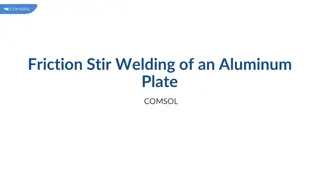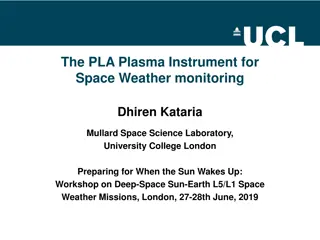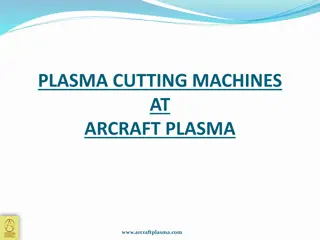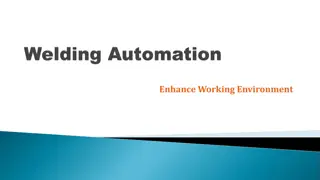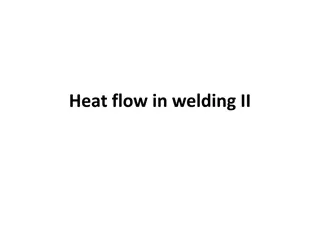Plasma Arc Welding Principle & Process Analysis
Plasma Arc Welding (PAW) is an advanced welding process that utilizes a high-energy, low-heat input technique for deep penetration and narrow weld pools. The principle of PAW involves the generation of a coherent and constrained plasma arc that offers high energy density, precise control, and reduced heat-affected zone. By utilizing specific process parameters like plasma current, gas flow rate, and nozzle design, PAW achieves superior welding results with minimal distortion. This description covers the fundamental concepts and benefits of Plasma Arc Welding.
Download Presentation

Please find below an Image/Link to download the presentation.
The content on the website is provided AS IS for your information and personal use only. It may not be sold, licensed, or shared on other websites without obtaining consent from the author.If you encounter any issues during the download, it is possible that the publisher has removed the file from their server.
You are allowed to download the files provided on this website for personal or commercial use, subject to the condition that they are used lawfully. All files are the property of their respective owners.
The content on the website is provided AS IS for your information and personal use only. It may not be sold, licensed, or shared on other websites without obtaining consent from the author.
E N D
Presentation Transcript
Lecture 16 Part 2 Plasma Arc Welding
Plasma Arc Welding-Introduction -PAW can be considered as an advanced version of TIG welding it contains electrode and inert gases for shielding of the molten metal. -Low velocity plasma and diffused arc is generated in the TIG welding while in case of PAW very high velocity and coherent plasma is generated. -Large surface area of the arc exposed to ambient air and base metal in case of TIG welding causes greater heat losses than PAW and lowers the energy density. Therefore, TIG arc burns at temperature lower than plasma arc.
Principle of PAW In PAW arc is forced to pass through nozzle (water cooled copper) which causes the constriction of the arc. -Constriction of arc results in (a) reduction in cross-sectional area of arc, (b) increases energy density (the weld penetration increase and weld width decrease )and (c) increases to velocity of plasma approaching to the sound velocity and temperature to about 25000 0C. these factors together make PAW, a high energy density and low heat input welding process therefore; it reduces problems associated with weld thermal cycle.
Principle of PAW -A coherent, calumniated and stiff plasma is formed due to constriction therefore it doesn t get deflected and diffused. Hence, heat is transferred to the base metal over a very small area which in turns results in high energy density and deep of penetration and small width of the weld pool / key hole / cut. -Further, stiff and coherent plasma makes it possible to work having stable arc with very low current levels (<15 A) which in turn has led to development micro-plasma system. -Energy density and penetration capability of plasma jet is determined by the various process parameters namely plasma current, nozzle orifice diameter and shape, plasma forming gas (Air, He, Ar) and flow rate of plasma carrying. -Increasing plasma current, flow rate, thermal conductivity of plasma forming gas and reducing nozzle orifice diameter result in the energy density and penetration capability of plasma jet. -In general, the plasma cutting uses high energy density in combination with high plasma velocity and high flow rate of high thermal conductivity plasma forming gas
Principle of PAW -In plasma cutting, thermal conductivity of plasma forming gas must be high enough for cutting operation so that heat can be effectively transferred rapidly to the base metal. -Plasma welding needs comparatively low energy density and low velocity plasma to avoid melt through or blowing away tendency of molten me -This process uses the heat transferred by plasma (high temperature charged gas column) produced by a gas (Ar, Ar-H2 mixture) passing through an electric arc, for melting of faying surfaces.
Principle of PAW -Inert gas (Ar, He) is used to protect the molten weld pool from the atmospheric gases. Charged particles (electrons and ions) formed as a result of ionization of plasma -Electric arc can be produced between non consumable electrode and work-piece or non-consumable electrode and nozzle. -Plasma arc welding uses two types of gases one is called plasma gas (is primarily used to develop plasma by passing through arc zone and transfer the heat to the weld pool and other is inert gas (primarily for shielding the weld pool from the atmospheric gases).
Principle of PAW -PAW uses the constant current type power source with DCEN polarity. -DCEP polarity does not help the process in either way. Current can vary from 2-200 A. -The plasma arc in PAW is not initiated by the conventional touch start method but it heavily depend on use of high frequency unit. -Plasma is generated using two cycles approach a) producing very small high-intensity spark (pilot arc) within the torch body by imposing pulses of high voltage, high frequency and low current about 50A (from HF unit) between the electrode and nozzle which in turn generates a small pocket of plasma gas and then as soon as torch approaches the work-piece main current starts flowing between electrode and job leading to the ignition of the transferred arc. At this stage pilot is extinguished and taken off the circuit.
Types of PAW -The Plasma generated due to the arc between the non-consumable electrode and workpiece is called transferred plasma whereas that due to arc between non-consumable electrode and nozzle is called non-transferred plasma. -Non-transferred plasma system to a large extent becomes independent of nozzle to work piece distance. Transferred plasma offers higher energy density than non-transferred plasma and therefore it is preferred for welding and cutting of high speed steel, ceramic, aluminium etc. -Non-transferred plasma is usually applied for welding and thermal spray application of steel and other common metals. -Depending upon the current, plasma gas flow rate, and the orifice diameter following variants of PAW has been developed such as: 1- Micro-plasma (< 15 Amperes) 2-Melt-in mode (15 400 Amperes) plasma arc 3-Keyhole mode (>400 Amperes) plasma arc
Principle of PAW -Micro-plasma welding systems work with very low plasma forming current (generally lower than 15 A) which in turn results in comparatively low energy density and low plasma velocity. These conditions become good enough to melt thin sheet for plasma welding. -Plasma for melt-in mode uses somewhat higher current and greater plasma velocity than micro-plasma system for welding applications. This is generally used up to 2.4mm thickness sheet. -For thickness of sheet greater than 2.5 mm normally welding is performed using key-hole technique. The key hole technique uses high current and high pressure plasma gas to ensure key-hole formation. High energy density of plasma melts the faying surfaces of base metal and high pressure plasma jet pushes the molten metal against vertical wall created by melting of base metal and developing key-hole. - Plasma velocity should be such that it doesn t push molten metal out of the hole. The key is formed under certain combination of plasma current, orifice gas flow rate and velocity of plasma welding torch and any disturbance to above parameters will cause loss of key-hole. For key-holing, flow rate is very crucial and therefore is controlled accurately + 0.14 liter/min. Nozzles are specified with current and flow rate.
Advantage of PAW -With regard to energy density, PAW stands between GTAW/GMAW and EBW/LBW accordingly it can be used using melt-in mode and key-hole mode. -Melt-in mode results in greater heat input and higher width to depth of weld ratio than key-hole mode. -Higher energy density associated with PAW than GTAW produces narrow heat affected zone and lowers residual stress and distortion related problems. -High depth to width ratio of weld produced by PAW reduces the angular distortion. It generally uses about one tenth of welding current as compared to GTAW for same thickness therefore it can be effectively applied for joining of the thin sheets. Further, non- transferred plasma offers flexibility of variation in stand off distance between nozzle and work-piece without extinction of the arc.
Limitation of PAW -Infrared and ultra-violet rays generated during the PA welding are found harmful to human being. -High noise (100 dB) associated with PAW is another undesirable factor. -PAW is a more complex, costlier, difficult to operate than GTAW besides generating high noise level during welding. -Narrow width of the PAW weld can be problematic from alignment and fit-up point of view. -Productivity of the PAW inrespect of welding speed is found lower than LBW.
